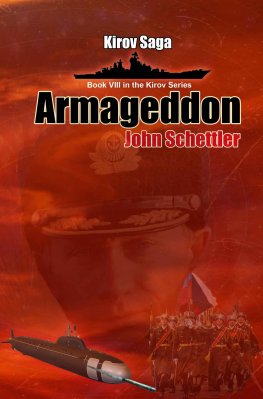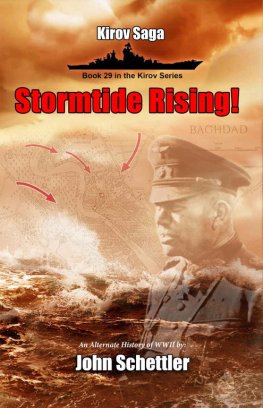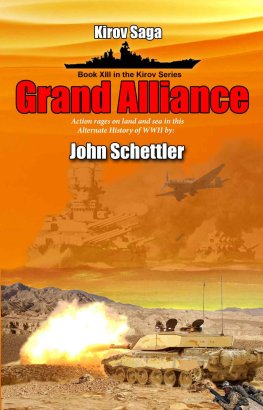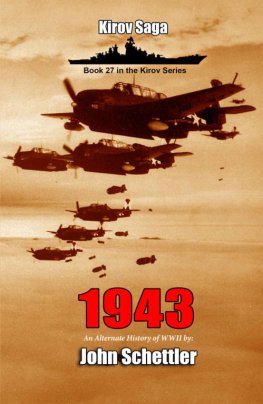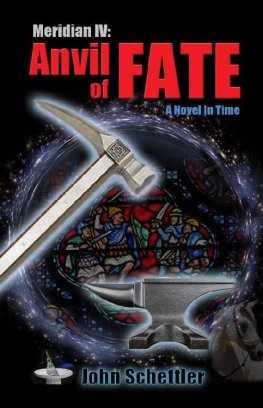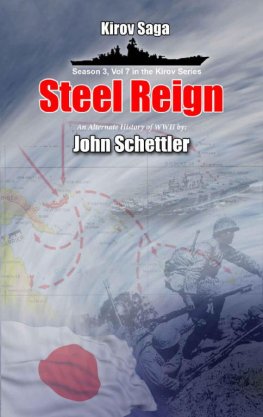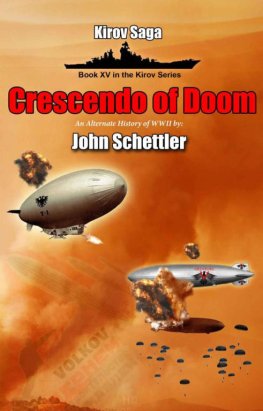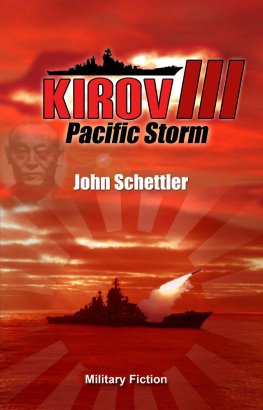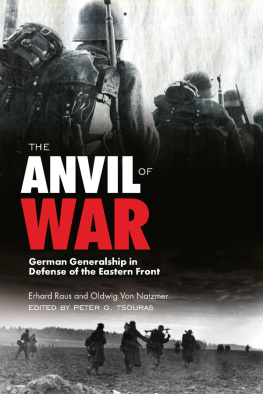Kirov Saga:
THORS ANVIL
By
John Schettler
Dear Readers,
As you may have noticed, Im a serious and lifelong student of WWII. I can remember reading Sink the Bismarck in Middle School, and have loved all the battles on sea and land ever since. A warmonger? No. A man in love with this history? Yes. So please pardon me if I build a level of detail into these stories to properly honor that history, and the men and women who lived it through. Sometimes the outcome of a battle or entire campaign can hinge on one division, one regiment, one battalion, even one man. I try to go to each of those levels in my recounting of the war, Strategic, Operational and Tactical. And I try to give you a chair in the briefing rooms, and sometimes even get you inside the heads of all the main historical figures.
In the author interview for this book, I talk more about all this, and why my understanding of the history reaches deeper than the sweeping overall strategy of things. But I havent lost sight of where the series all began, on that ship in the Norwegian Sea. I know some of you are out there just wanting to walk that deck. Dont worry, there will be lots more action featuring the original cast and crew to come. Yet the series isnt just named after that ship, but also the man that gave the ship his name. One of the principal historical figures is young MironovSergei Kirov, and his struggle to save his nation is at the heart of this story. The lines of fate run through him in very many ways, and his tale will continue in this volume, along with Fedorovs mission.
That man now guides the history that gave rise to the ship that launched this series. In that light, please understand that the retelling of that history is now my overweening vision for the series as a whole. The life and survival of Kirov, the ship, and all the crew, depend on the outcome of this war. The entire question concerning the Grand Finality raised by Elena Fairchild and Paul Dorland rests on the plates Im stacking up in this kitchen. Will the altered history ever give rise to the building of that ship? The crew of Kirov shattered the original history, and now I am doing my best to piece it back together, and their fate rides in the balance.
Some, like Karpov, have jumped into that history wholeheartedly, intending to win; to make it their own. Others, like Fedorov and Volsky, remained deeply conflicted about what they were doing. Over time, they come to see that they can never hope to restore things as they were. That admission means their lives are now on the altar I am building to that history, come what may. They must decide what they will do now to see it all through to a conclusion. I will do the same.
A lot of you write to me with comments, questions, suggestions or just to say what you like most about the series, or what you want to see next. Some tell me they wait for the next historical segment, the retelling of the war that is now part of the great labor of the series. Some say they want that material less detailed, while others ask for more. Some say they love the character based segments, both with the main characters aboard Kirov, and with the historical characters. Some want the naval action, others the land battles. In this offering, I will try to please you all.
I have a lot of ground to cover here. We last left the Pacific Theater on the 5th of May with that big carrier duel that became the Battle of the Koro Sea. That ran in tandem with the confrontation between Takami and Kirov in the Sea of Okhotsk. Now we return to the Pacific to catch up on what has been happening after Takami broke off and Kurita wisely retired from that engagement.
After that, I have six or seven chapters for you on the conduct and outcome of Fedorovs mission, and its consequences. There will be a brief recap of what has been going on with Rommel and Patton, and that takes us to the halfway mark. The last half of the book will then be devoted to the east front, the struggle at Volgograd, and the Russian Winter Counteroffensive continues with yet another bold thrust by Zhukov in Operation Jupiter. I hope you enjoy it as much as I did while writing it, the research, the men, the battles.
Fear not! We return to Kirov big time in 1943. One Vladimir Karpov is about to take off the gloves.
- John SchettlerThat is the beauty of the rose, that it blossoms and dies.
Willa Cather
On the northern Island of Hokkaido, the Cherry Blossoms were blooming very late that year. It was already June, the war over six months old, but the beauty of the fragile white flowers had not been frightened away. Yet that year, another flower was blooming in a secret design facility near Yokosuka that had first been set up to evaluate models of foreign aircraft acquired by Japan before the war. It was now working closely with the Naval Academy and design bureau at Tsukijii near Tokyo Bay, and the flowers they were contemplating would one day come to be known as the MXY-7 Ohka, or Cherry Blossom.
For a long year now, there had been rumors, followed by intelligence, concerning the existence of a phantom ship that had appeared in the Atlantic, soon found to be closely cooperating with the British Royal Navy. It was thought to be a highly advanced prototype ship, bearing weapons that soon shocked military analysts in battles with the German Kriegsmarine. They were naval rockets, fast, precise in their targeting, and very deadly.
The rumors remained simply that for some months, talk in the bars, whispered tales, sailors stories as wile and contrived as those of a fisherman describing his catch. But they did not remain rumors and stories for very long. Not ten days after the dramatic opening attack on the American fleet at Pearl harbor, the rumors and gossip became a grim reality, witnessed by officers of the highest rank aboard the flagship of the Kido Butai, the carrier Akagi.
A sighting report had come in from a search plane describing a fast moving vapor trail approaching Nagumos task force from the north. That alone had been puzzling, for there was no land mass of any kind in that direction where a plane might have originated.
What is this supposed to mean? said Nagumo at that time, handing the report to the ships Captain. A fast moving vapor trail?
The Captain frowned at the paper, but at that moment a bell rang and the upper watch was reporting verbally that something was in the sky to the north. Nagumo considered the possibilities quickly. The only land mass that could have launched an aircraft was Wake Island to the south. What would be coming out of the north? Could one of the American carriers have been so bold as to follow them? Surely his search planes would have spotted such a task force creeping up, but he had not paid much attention to the northern flank. He had three fighters up on cap, with three more on the decks of his carriers ready for immediate launch. He had it in mind to have his Air Commander, Masudo Shogo, vector in one of those fighters for a look, until he saw what the watchmen were reporting with his own eyes.
The meaning of fast moving vapor trail was now immediately apparent. Something was soaring towards his position, high in the sky, but now it began to descend, like some demigod or demon swooping down. It had to be a plane on fire, he thought, raising his field glasses, and thinking he could even see the faint gleam of fire there. Some ill-fated pilot was falling to his doom, but impossibly fast in the descent. Who could it be?
Then, to his utter amazement, the falling aircraft leveled off just before it would have crashed into the sea. All the men on the bridge who saw it reacted, some pointing in awe. The Admirals eyes narrowed as he watched. It was coming, still burning from what he could see, low and fast over the water, and the fire from its tail glowed upon the sea. That such a descent could have been corrected at the last moment like that seemed an impossible feat of flying to his mind, but now he would see more than he ever thought possible. The aircraft suddenly veered left, then right again, dancing over the water like a mad kami from hell. The pilot must have finally lost control, he thought, but the longer he looked, the more those first moments of surprise extended into shock.


